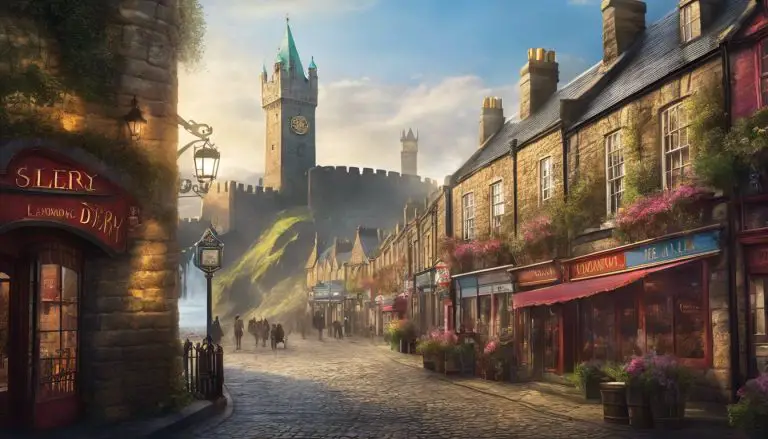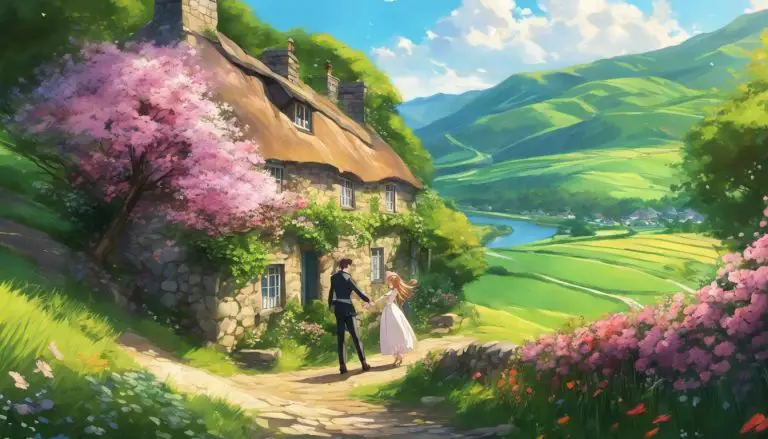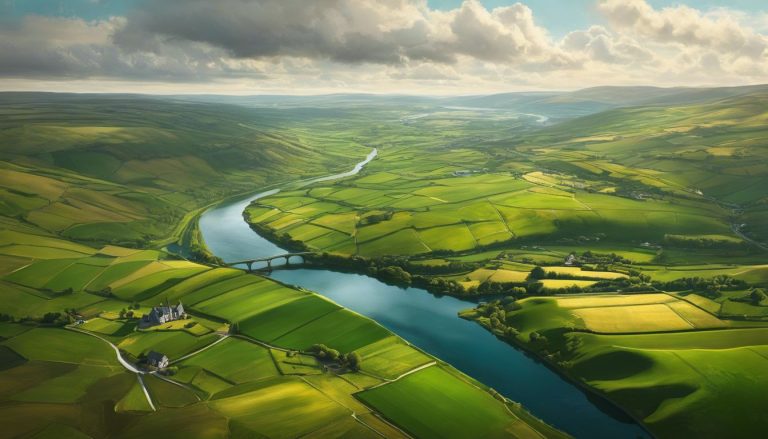Exploring the Rich Tradition of Ireland Instruments
Have you ever found yourself adrift in the enthralling labyrinth of Ireland’s traditional music instruments? It’s a familiar situation for many, immersed in exploring the rich history and entrancing sounds of these Celtic gems.
In this post, we’ll navigate together through the effervescent realm of Irish instrumentals—dive into a journey spanning from ancient fiddles that have sweetly sung through millennia, to flutes embodying the very spirit of this vibrant culture.
Stay with us as we reveal the harmonious threads intricately woven into the heart of Ireland’s musical heritage!
Key Takeaways
- Traditional Irish instruments like the fiddle and uilleann pipes have been part of Ireland’s culture for over 3000 years. They create lively and haunting melodies that tell stories from history.
- The bodhrán drum adds deep rhythm to Irish music, often used in folk songs and storytelling. Instruments like the bouzouki joined the scene in the 1960s, mixing Greek roots with Celtic tunes.
- Ornamentation in Irish music uses techniques like rolls, cuts, and slides to make melodies more beautiful. This style helps give Irish music its unique sound.
- To play fast traditional Irish tunes, practice scales and arpeggios every day. Using a metronome can help you slowly increase your playing speed without losing clear notes.
- The banjo came from Africa but has become essential in Irish music. Its rhythmic beat fits well with other traditional instruments, showing how different cultures can blend into new traditions.
Traditional Irish Instruments: A Brief Overview
I am excited to dive into the world of traditional Irish instruments. From the soulful sounds of the fiddle to the haunting melodies of uilleann pipes, these instruments have a rich history and play an integral role in Irish music.
Let’s take a closer look at some of these iconic instruments and their significance in Irish culture.
The Fiddle
The fiddle sings in my hands, echoing centuries of Irish tradition. In the heart of Ireland’s music scene, you’ll find this stringed beauty captivating audiences with its sweet and lively tunes.
It carries the soul of Counties Sligo and Donegal, where master fiddlers shape its sound. I run my bow across the strings, each note a story from a rich musical heritage.
Sliding fingers on the fingerboard, I play jigs and reels that travel through time. The fiddle isn’t just an instrument; it’s a keeper of history, reflecting Ireland’s diverse influences over 3000 years.
With every tune I learn, I’m not just playing music—I’m keeping a vibrant tradition alive for you to discover too.
Celtic Harp
Moving from the lively tunes of the fiddle, let’s delve into the enchanting world of the Celtic harp. With a history deeply rooted in Irish culture, this iconic instrument is brimming with melodic charm and grace.
The graceful yet powerful reverberations of the harp have made it an emblematic symbol of Ireland’s musical heritage, enriching countless traditional tunes.
The huge but elegant frame of the Celtic harp holds deep historical significance, embodying over 3000 years of Irish music tradition. Its resonance has woven its way into numerous traditional melodies, creating an ethereal atmosphere that captures the essence of Ireland’s rich musical legacy.
Uilleann Pipes
Uilleann pipes are a unique traditional Irish instrument, producing a sweet and haunting sound. These bellows-blown bagpipes have a distinctively rich tone and are capable of expressing great emotion in their music.
The origin of the name “uilleann” comes from the Irish word for elbow, referring to the method used to inflate the bellows.
These complex but mesmerizing pipes require skill and dedication to master but reward those who persevere with their beautiful, resonant melodies. Uilleann pipes have become an integral part of Irish traditional music, adding depth and character to countless tunes through their distinctive timbre.
Bodhrán
The bodhrán is a traditional Irish frame drum, played with a double-headed stick called a “tipper” or “beater.” It has a deep historical connection to Irish culture, used in folk music and cultural celebrations.
The rhythm and resonance of the bodhrán add depth and energy to traditional Irish music, making it an essential instrument in many musical performances and sessions. As travelers exploring Ireland’s rich musical heritage, experiencing the bodhrán played live can provide an authentic taste of the country’s vibrant traditional music scene.
In addition to its role in traditional music, the bodhrán is also known for its association with storytelling. Its rhythmic beats often accompany spoken word performances or dramatic narratives, adding atmosphere and emotion to ancient tales passed down through generations.
Bouzouki
I am captivated by the bouzouki, a stringed instrument that found its way into Irish music in the 1960s. With roots in Greek music, this instrument has carved its own niche in traditional Irish tunes.
Its unique and melodic tones add depth and richness to Irish folk music, making it an essential component of many performances across Ireland. The bouzouki’s resonant sound complements other traditional instruments such as the fiddle, flute, and bodhrán, elevating the overall harmony of Celtic melodies during lively sessions.
The bouzouki brings a distinctive flavor to traditional Irish music with its characteristic long neck and four pairs of strings. Players explore various tunings for versatile arrangements while embracing quick rhythmic patterns that enhance each performance.
The Influence of Ornamentation in Irish Music
I’ll delve into the techniques used to add melodic charm to traditional Irish music, as well as explore the important role of ornamentation in creating the distinct sound of Irish music.
Techniques for adding melodic charm
To add melodic charm to traditional Irish music, here are some techniques you can use:
- Emphasize ornamentation: Incorporate rolls, cuts, and slides to enhance the melody.
- Utilize vibrato: Add vibrato to sustained notes for a more expressive and emotive sound.
- Experiment with grace notes: Introduce grace notes before main melody notes for embellishment.
- Master finger placement: Focus on precise finger placement on the instrument to ensure clarity and accuracy in the melody.
- Explore dynamics: Play with variations in volume and intensity to bring depth and emotion to the music.
- Incorporate rhythmic variation: Experiment with different rhythmic patterns and syncopation to infuse the melody with energy.
- Immerse in storytelling: Connect deeply with the music’s narrative, conveying emotion through every note played.
- Fuse traditional and personal style: Honor tradition while injecting your unique interpretation into the melody for a captivating performance.
The role of ornamentation in Irish music
Adding melodic charm to Irish music is achieved through intricate ornamentation techniques. Ornamentation enhances the melody, adding grace and expressiveness. It includes trills, rolls, cuts, and slides that give a distinctive character to traditional tunes.
The ornaments bring life and personality to the music, creating an enchanting atmosphere for both the performers and listeners.
Instruments of Ireland contribute depth with their unique ornamentation adding charm and flair to the traditional tunes played by musicians throughout their performances.
Overcoming the Speed Hurdle in Irish Music
Mastering the quick rhythms and techniques in Irish music can be challenging, but with the right tips and practice, it’s possible to play fast and keep up with the lively tunes. Whether it’s honing your finger placement or perfecting your bowing technique, there are ways to overcome the speed hurdle in Irish music.
Tips for playing fast
To play fast in Irish music, keep your fingers close to the strings or holes of your instrument. Maintain a relaxed posture while playing, allowing for swift movement and precision. Here are some specific tips to help you play with speed:
- Practice scales and arpeggios daily to build dexterity and finger coordination.
- Use metronomes to gradually increase your playing speed, allowing for controlled progress.
- Focus on clean and accurate movements rather than solely on speed, ensuring clarity in each note.
- Study traditional Irish tunes at a slow pace initially, then gradually pick up the tempo as you become more comfortable with the piece.
- Incorporate ornamentation techniques such as rolls, cuts, and strikes into your playing to add flair while maintaining speed and accuracy.
Mastering quick rhythms and techniques
Mastering quick rhythms and techniques requires dedication and practice. Here are some tips to help you achieve speed and precision in Irish music:
- Use consistent bowing or picking patterns to maintain the tempo.
- Practice scales and arpeggios at varying speeds to improve finger dexterity.
- Focus on proper hand positioning to facilitate quick shifts between notes.
- Utilize ornamentation techniques such as rolls and cuts to enhance fast passages.
- Experiment with rhythmic variations to add complexity to your playing.
- Study recordings of proficient Irish musicians to observe their rapid execution of melodies.
- Incorporate breathing techniques if playing wind instruments for sustained speed and control.
The Banjo: From African Roots to Irish Legacy
The banjo has a fascinating history that traces back to African roots, brought to Ireland by traveling musicians. Its unique sound and rhythmic qualities have made it an integral part of traditional Irish music, adding depth and diversity to the country’s musical heritage.
Origins and evolution
The banjo originated in Africa before making its way to the United States and later being embraced by Irish musicians. Its distinct sound quickly found a home in traditional Irish music, adding depth and charm to lively tunes.
Through cultural exchange and creativity, the banjo evolved from its African roots to become an integral part of Ireland’s musical heritage.
This evolution showcases the dynamic nature of traditional Irish music and its ability to incorporate influences from diverse cultures. As a traveler interested in immersing yourself in Ireland’s rich musical traditions, exploring the origins and evolution of instruments like the banjo offers an insightful glimpse into the country’s vibrant musical tapestry.
Banjo’s place in traditional Irish music
The banjo adds a lively rhythm to traditional Irish music, infusing it with an infectious energy. Its unique sound brings a distinctive flavor to Irish folk tunes and sessions, captivating both musicians and audiences alike.
The banjo has become a cherished part of the rich tapestry of traditional Irish music, adding depth and character to performances across the country. As an essential component of Irish musical heritage, the banjo continues to play a vital role in preserving and evolving Ireland’s vibrant musical traditions.
Originating from African roots, the banjo has seamlessly intertwined itself with Irish legacy, bringing forth a fusion that resonates throughout the heart of traditional Irish music.
Conclusion
In conclusion, exploring the rich tradition of Ireland’s musical instruments reveals a deep and diverse heritage. From the enchanting fiddle to the evocative harp, these traditional Irish instruments carry centuries of history and symbolism.
Embracing ornamentation and mastering speed hurdles open new dimensions in playing Irish music. The banjo’s evolution from African roots to its place in Irish legacy adds a unique depth to traditional tunes.
Understanding this rich tapestry of sounds gives travelers an immersive experience into Ireland’s cultural fabric, fostering appreciation for its musical legacy.






